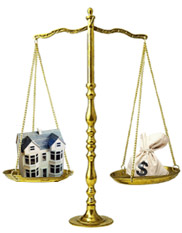It’s the Canadian dream: buying a revenue or rental property. Thousands of homeowners do it every year, opening mortgages for homes that won’t be used as their primary residences. Unless you’re paying for the revenue property in cash or have an extremely high annual income, how the lender calculates the rental income could determine whether you may or may not qualify for the mortgage you need to purchase that home.
Given that this type of investment is considered to be higher risk than owner live-in properties, the process is traditionally more complex, and possibly higher cost than traditional mortgages, but recently regulations and new products have opened new doors for people looking to fulfill their dreams.

Mortgage Insurance
One of the major obstacles been the down payment requirements for purchasing rental or revenue properties in Canada. Currently, there is no mortgage insurance available for high ratio or unconventional mortgages on revenue properties in Canada. Most lenders are only willing to finance up to 80% of the value of these homes due to the mortgage insurance requirements. Therefore currently, the minimum down payment that is required to purchase a revenue property in Canada is 20% or more, depending on your financial situation. Some lenders may still require mortgage insurance on revenue properties at up to 80% Loan to Value and may or may not charge an insurance premium to the borrower for doing so.
For all properties that will be generating a source of rental income, there are now three ways of calculating the value of that income, each of which comes with its own advantages and limitations.
Rental Income Addback
First, a percentage of the rental income can be added to the buyer’s income. The amount is typically between 50 and 100 % and is the traditional method for calculating an applicant’s suitability. The income method is considered to be the more conservative of the three as the full mortgage value must be qualified for at the increased income level. If the rental income is for example $1000 each month, the lender will then add up to $12,000 to the annual income of the applicant to qualify for the mortgage on the rental property.
Rental Offset
The second method is called the rental offset method. In this case fifty to one hundred percent of the value of the rental income is applied against the anticipated mortgage payments, thereby significantly decreasing the amount that the applicant will be out of pocket every month. The percentage of rent that can be applied against the mortgage payment will depend on each lender’s policies, the mortgage insurance (if any), and the overall credit score of the applicant etc.
Net Rental Income
The most generous form of calculating rental income is by using the net rental income method. The lender will calculate rental income by deducting management fees, vacancy expenses, property taxes, strata fees and principal and interest payments, then using the net rental income amount to offset the subject property. This is one of the most favourable ways of calculating rental income today.
Summary
Given the above, applicants will easily qualify for much higher value mortgages by applying the net rental income or offset to the mortgage application rather than the “addback” method. 
Clearly, the rental income is much more powerful when applied to the mortgage payment than it is on the income side of the equation. The risk comes in if the rental value drops, or the property is unoccupied for an extended period of time. Each individual’s situation is unique, these and more techniques can be used to make sure that your dream becomes a reality in the most comfortable way possible for you. We have helped dozens of clients purchase revenue properties across British Columbia.


